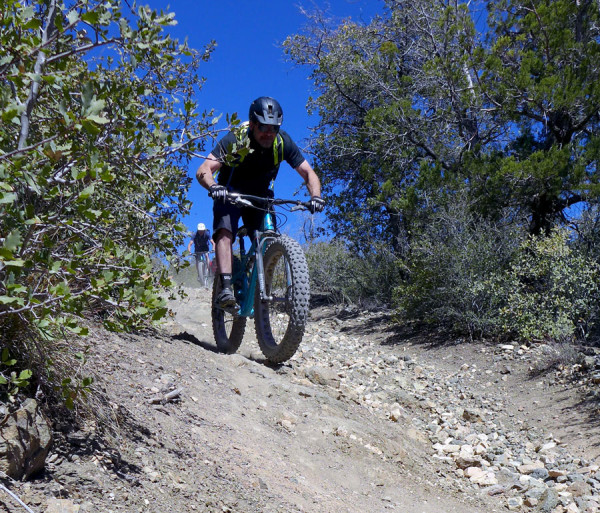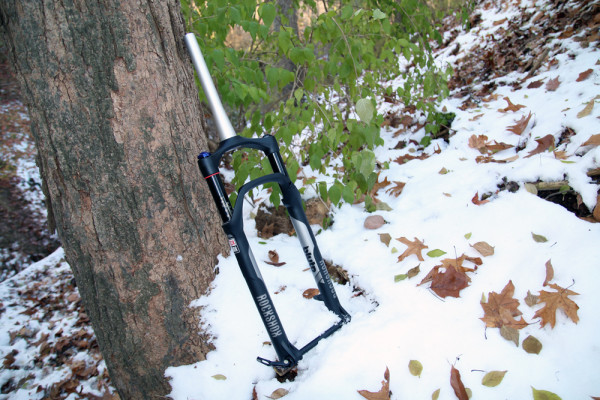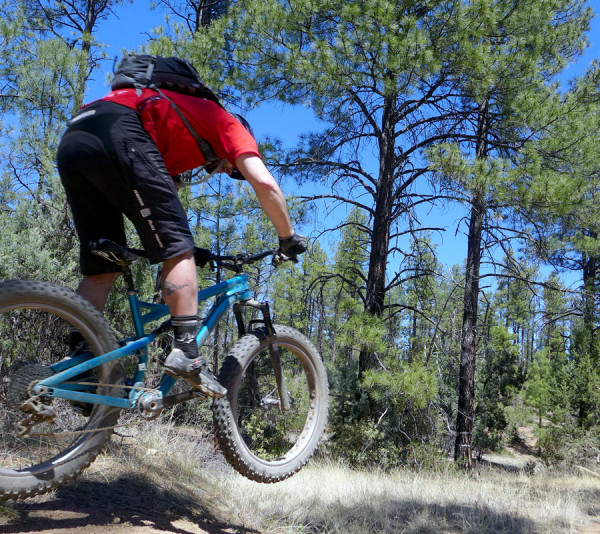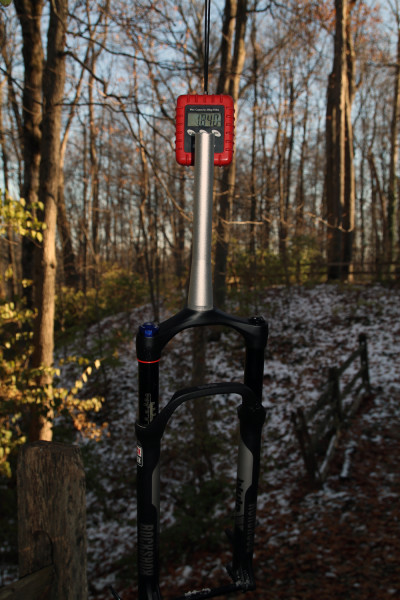
The Rockshox Bluto changed the game for fat bikes. Just like the 29ers that heralded before, it took the release of a major brand’s suspension fork to start to give the idea traction (pun intended) in the minds of consumers. Many of the early adopters of the fat bike movement were polarized on the need for suspension when you already have a 4″ tire at 8psi being able to take the majority of shock before it is transmitted to the rider.
Interestingly, the same brand that brought us the Reba, propelling 29ers into mainstream, also has brought us the Bluto, doing the same for fat bikes. SRAM remains one of the most flexible companies in the business, most likely to be the early adopter of new technology. Simply because of this business strategy of working closer together with their OEM customers to be on the front of new trends, they often lead and let the others follow. These risks may not always pay off, but when they do, customers take notice.
Now that the Rockshox Bluto has been on the market for a season, and is entering the first bit of snow use, we discuss our thoughts on the use and application of a product that has changed where the tracks of fat tires go.

I think the biggest question people will send is “why suspension for a fatbike?”. The thing is, it’s not about bump absorption, it’s about control. Suspension and traction help keep control in corners, and that is what Bluto adds. Fatbike tires are essentially undamped 2” suspension members, and they behave that way. Undamped suspension can be worse than no suspension when it comes to cornering traction and predictable handling. What the Bluto does is not about rider comfort, its about turning the fatbike from a limited scope of use before into a much more capable machine, being able to ride more aggressively because of greater control.
I have a unique vantage point on this product, having spent the majority of the last three years of my career campaigning various suspension manufacturers to build a suspension fork for fat bikes. I still have here in my basement the very first Lefty fat bike prototype made 4 years ago with Craig from Mendon Cyclesmith as proof of concept. Craig went on to refine that design, and still sells them today. We used several bikes with Leftys mounted to them to loan to the fork manufacturers, let them ride it, and prove the point.

Applause is due for the team at Rockshox for being the first to take the risk. Making a brand new suspension fork is a huge risk if the market is not known, as the cost of tooling exceeds the average cost of a new house, and that’s not counting the time of a team of people for design, testing and marketing. While it may seem pretty easy in concept to just stretch out a Reba, it is actually a giant leap of faith for the company putting up the dollars.
Zach and I have spent time this year aboard the Bluto, and had a chat about how we liked it, where it could improve and other general impressions:
As the first mass produced fat bike suspension fork, the Bluto has a number of positives –
Tim: Adjustable travel is good to find the place you want to be for suspension. I find 100 more than enough, and to get the feel I want with the fat tire, I run almost 40% sag.
Zach: Yeah, the adjustable travel is especially important if you want to fit the fork to non-suspension corrected frames. Being able to drop it down to 80mm will get you closer to the shorter axle to crown measurements, but still will result in the front end being raked out a bit. In the different configurations the axle to crown measurements come in at 491mm (80mm Travel); 511mm (100mm Travel), and 531mm (120mm Travel).
I find myself running 15-20% sag but that is with two Bottomless Tokens installed which is how it was sent. The ability to fine tune the spring curve with the addition of Bottomless Tokens is a nice feature.
Tim: Through axle was a good call. Some people asked for a QR – but I’m not sure they knew what they were asking for, it would have been impossible to ride. They also established the 150mm standard. Finally, with a large player entering and establishing a standard, the rest of the industry will align to it. Several fat bike companies are working on 150mm rigid forks, and some are launched already. This action by RockShox will finally settle this segment down and standardize things.
Zach: A QR fat bike suspension fork would be ridiculous. The 150mm TA seems to be the right call, though it will be better once the fat bike industry as a whole moves to the 150mm front standard. Convertible 135mm to 150mm hubs are great, but there is room for improvement with a dedicated 150mm hub.
Tim: Luckily for consumers, they used the same internals from the current Reba/Sid/Revelation design. This is a good thing because parts for travel changes or spares are already available at most bike shops, so the only new specific parts are the crown, the lowers and the axle.

And now, a few areas with room for improvement:
Tim: I don’t want to get too down on the Bluto, as it really is impressive for being the first. However, when they get to version 2, there is some room for improvement. First, the Bluto is flexy. Rockshox should have introduced it in 35mm legs (Pike Chassis). It seems like they adapted a Reba because it was the fastest way to market, but maybe didn’t do enough to look into the forces or the use case of these bikes. With the extra traction of the wide tire, its easy to get the bike to a place where it overpowers a 32mm chassis in a hurry. It’s also about appearance. Held up against fat tires, the 32mm legs look anemic. Like a lot of the carbon fat bike frames on the market, the overall visual size of the fork needs to be matched to the extra bulbous appearance of the tires.
Zach: Being on the smaller side, the flex doesn’t bother me as much. I’m sure like most suspension upgrades once I rode a stiffer fork the benefit would become more apparent, but at the moment I really have no issue with the 32mm platform. But I am only 5’8″ and 150lbs.
Tim: Yeah, that could be why since I am 6’1″ and 275lbs. Thankfully for me though, currently the Bluto is only available in tapered and through-axle versions which keeps it together enough for regular riding. I bet this was aimed at capturing OE sales, but makes it really hard to put it on a lot of fatbikes sold prior to 2014. This also opens the market for another company (was it RST?) to already show a prototype of a straight steerer fork to capture those sales.
Zach: Yes, it is kind of a bummer that there is no straight steerer option. I’m assuming this may have to do with the amount of force the huge tire could put on the steerer with a strong brake. Honestly though, it also seems that most bikes with straight steerer tubes will also not be suspension corrected so they wouldn’t be the most ideal candidates for the fork anyways.
Tim: Funny enough, one of the positives is also a negative. I like that they used existing internals so we don’t have to go chase down Bluto-specific parts for travel changes or maintenance. However, there are different needs for spring rate and damping on a fat bike over a standard bike. Like you said Zach, you can change Bottomless Tokens to change the spring rate, and the dampers are adjustable. But with over 2″ of undamped suspension already in the wheel, I wonder if they took the dynamics of that into account? At any rate, the Bluto is leaps and bounds better than a rigid fork. The massive adaptation we saw this year at Eurobike of brands bringing a Bluto-equipped fat bike to market should have far exceeded Rockshox’s sales plans. I’m hoping this uptake will convince Rockshox to add additional models such as RCT3 dampers, or show Fox that there is a real market here they need to join.

RockShox claims 1,796 grams for the Bluto, and the actual weight came in at 1,840 grams. Since most of that material is cast or forged, a variance of just 46 grams is pretty good. Considering there is a lot of extra material there over a RockShox Reba RL, the jump from the Reba’s 1,662 grams is not too much. Given that most fat bike wheel components weigh double their 29er counterpart, that’s pretty good.
After hearing some rumors floating around regarding the fork’s performance in the cold, we decided to check in with SRAM to get the official word on what temperature ranges the fork is good for. SRAM MTB PR manager Duncan Riffle had this to say:
“RockShox products are designed for optimal performance in temperatures ranging from 0° C (32° F) to 38° C (100° F). As temperature affects performance, some adjustment of air pressure and damping may be required within this range. Product performance will degrade in temperatures outside this range. RockShox products are not recommended for use in temperatures below -12° C (10° F) and above 49° C (120° F).”
While I believe the Bluto’s best use is in the summer on the dirt (increasing traction and control), some people will build a fatbike to use year round, and that Bluto will remain on there in the winter. Duncan let us know this policy applies to all forks that Rockshox makes, and they do not have a separate policy for the Bluto. Very specifically, he talked about the warranty; “No, you will not ‘void’ warranty using it below or above these temperatures but understand that we do not recommend it due to our desired performance standards.” So there we have it, you may not get optimal performance from your fork below freezing temperatures, but you also will not void the warranty.
Should you buy a Bluto? That depends. If you only ride a fat bike on snow, it is probably not needed, and SRAM says it may not ride right below freezing, which would mean it’s probably not the best choice for you. However, if you are one of the fat bike adopters that rides fat full-time and year-round, then this will greatly improve your experience.